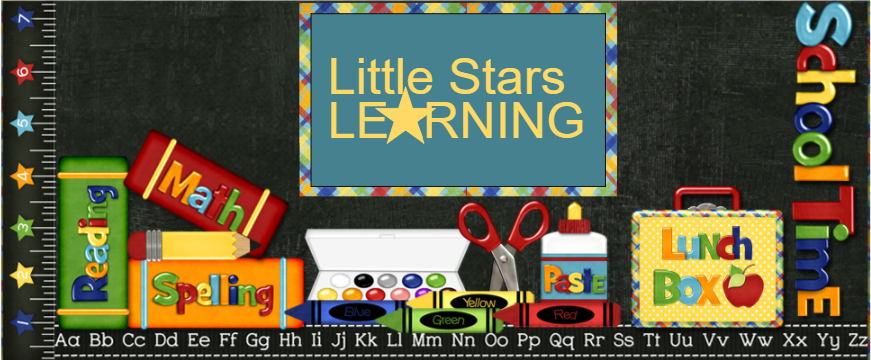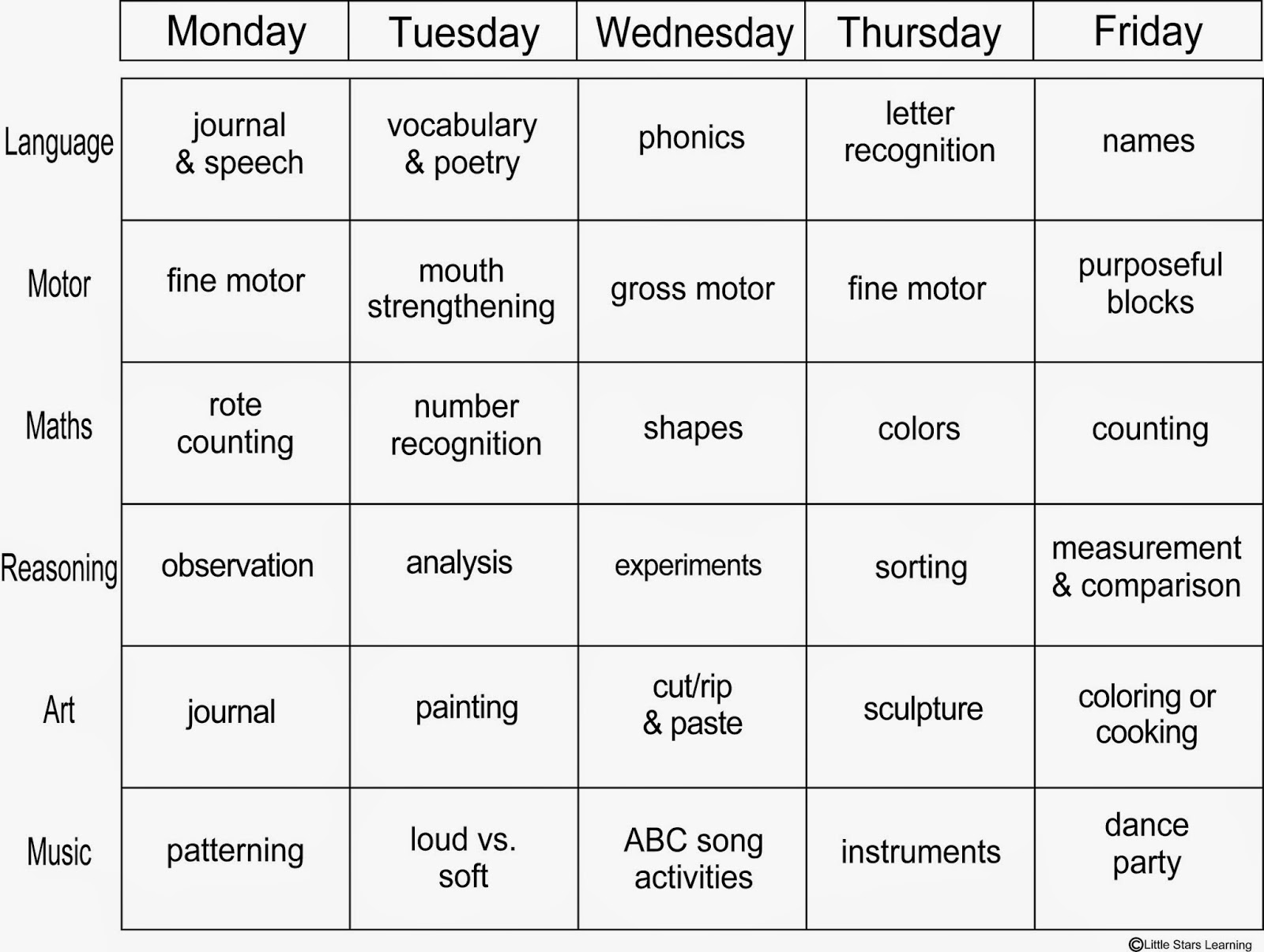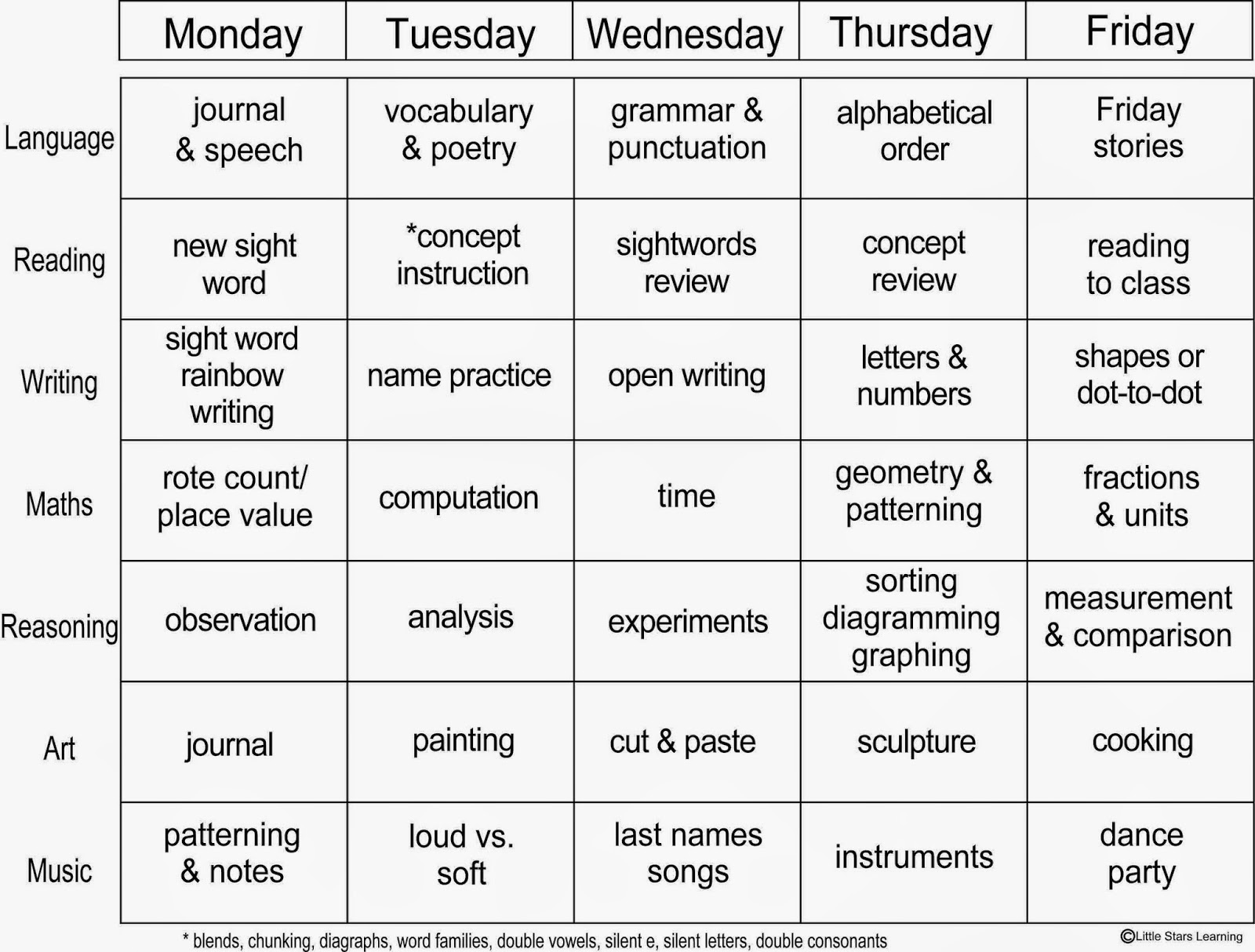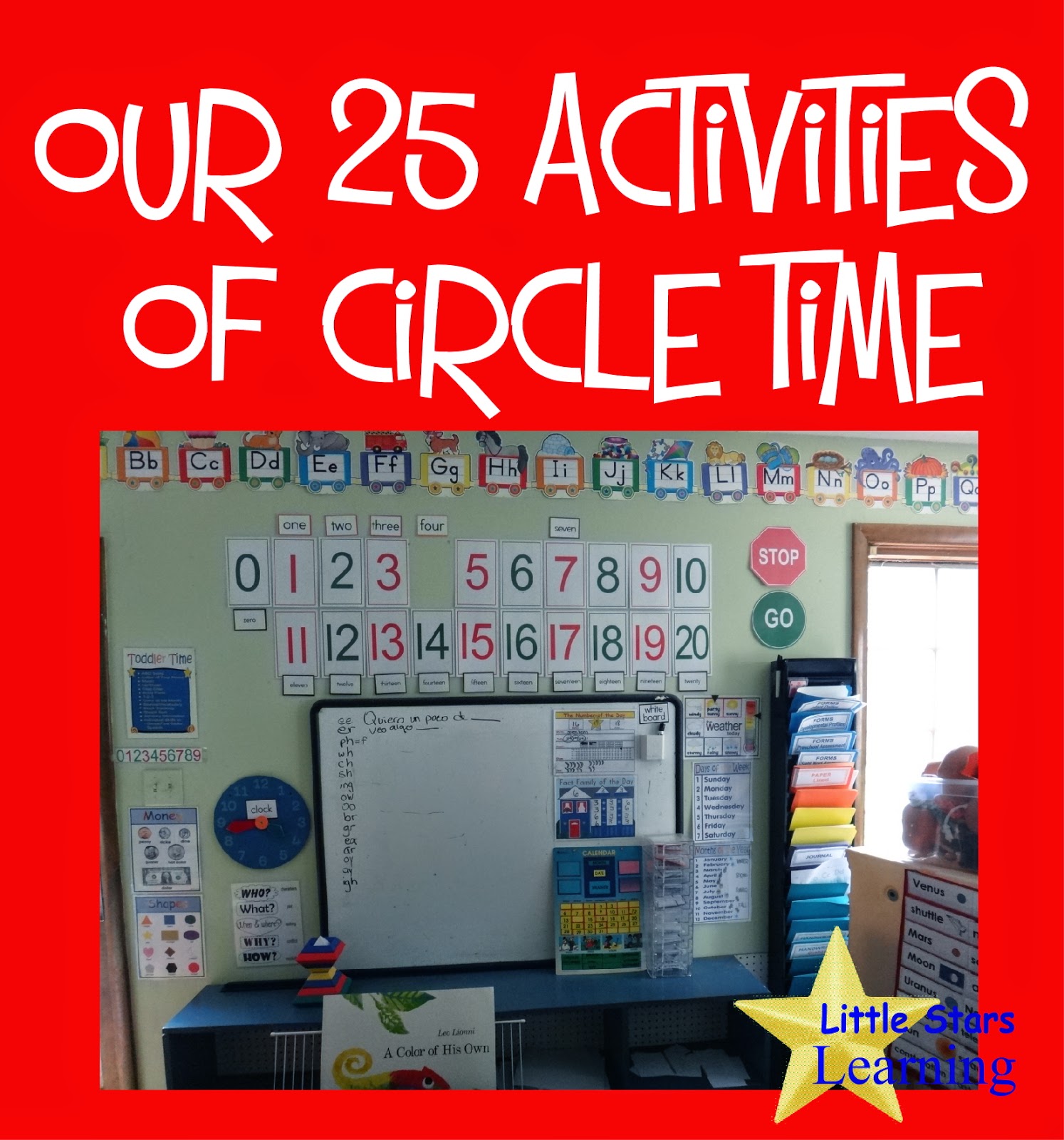Two Points:
- This is MY method, and not necessarily right for you, your teaching or care philosophy, your set-up, or your students.
- Curriculum participation by my students is VOLUNTARY. I invite them to participate, but if they choose not to, then that is fine. I usually offer them a choice of a few of the activities and let them decide where we start and where we go.
An engaged child learns, a dis-engaged child rebels.
The 3-year rotating curriculum is theme based. Some times we stick to the plan, but usually I observe what they are interested in learning about, what they are asking questions about, and suggest up to three different themes they can choose from for us to study.I make my own 3-year rotating curriculum for many reasons:
- Packaged curriculum is often only one year. Since I teach for 3 years, this would be redundant.
- Most packaged curriculum focuses on skills my students master early. My 2s count to 20, know 11 colors, know most of their phonics, uppercase and lowercase letters, 10 shapes and some of their numbers and I still have 3 years of curriculum to teach them.
- They often are worksheet intensive. My students usually are cognitively advanced from their fine motor skills. I have 4 year olds that still can't write well. If I had relied on worksheets for the last 2 years, there is no way they would have the skill sets they have.
Worksheets are also not considered Developmentally Appropriate Practice [DAP] for children under the age of 8. We use them here for writing practice starting at age 4. [Yes, worksheet-intensive public schools are not using DAP for kindy through 3rd grade!]
- They can be expensive. If you are purchasing worksheets, why would you spend even $1 a week/$52 a year when you can purchase a 400 page Scholastic preschool workbook from Sam's Club for $8 that covers probably more material, is most likely aligned with the public school expectations, and is colorful. Colored copies are NOT affordable to make from packaged curriculum.
- Most [ALL!] preschool learning should be interactive. Pinterest is a better source for ideas.
- My students change every time I do a theme. I have to be able to tweak it to the interests and capabilities of those currently in my care. Plus, I'll find more interesting activities on Pinterest, have an idea for a new game, etc. It's a constant evolution to keep my curriculum relevant to our current group, situation and resources.
However, curriculum planning and creation is very time consuming. Even with older curriculum I spend several hours going over it prior to teaching - updating, creating new materials, purchasing and setting new classroom decorations.
While I have had my 3 year curriculum, this year I found myself wanting a more specific schedule to focus on specific skill sets for this particular group of children. Most of these skills can be incorporated into our themed curriculum, or they take 5 minute sessions to pop into our day.
I have two groups, the younger preschoolers are 2-3 years old and the older ones are 4-5 years old, all at the same developmental and skill set level within their group. This makes it easier, as I can tailor everything to just 2 groups. If I were to have additional levels of children, then it would be tailored to each level.
Children here are taught at their developmental level, not age. Asychronastic development is normal, so I may be teaching a child at various levels depending upon the subject matter.
For the younger preschoolers, I came up with this structure.
For the older pre-k students, I came up with this one.
For instance, both of them have Measurement & Comparison on Friday for Reasoning. However, for the younger students, this would be a more/less, longer/shorter, big/little, etc. activity, while the older students would be measuring with rulers, yardsticks, tape measures, measuring cups, unit blocks, foot steps or themed units, and graphing the measurements to compare. Same skill set, differentiated at vastly different levels.
Even this needs conditional tweaking. All the pre-k's know how to spell their last names now, so that is no longer a relevant skill activity for music and will be changed out.
In another post I'll get into the curriculum components and the importance of each. For instance, how counting on Friday teaches 1-to-1 correspondence and creating method processes for counting groups of objects.
In another post I'll get into the curriculum components and the importance of each. For instance, how counting on Friday teaches 1-to-1 correspondence and creating method processes for counting groups of objects.
CLICK PICTURES TO VIEW LARGER
I use this MS Word template, available for FREE on TPT, for curriculum planning. Often, the daily skill sets above are either already incorporated, or can easily be incorporated, into the theme planning. For an example of a completed curriculum unit, check out our Owls Theme.
Each monthly theme is broken down into 4 sub-themes. For instance:
SPACE
- Astronauts & Rockets
- The Universe
- Our Solar System
- Aliens & Robots
We also have a musical component, often classical, and an art component, often a master, and Spanish vocabulary component that we incorporate.
This planning form may not include all games, file folder games, manipulatives, room-set up, etc. that I utilize.
For those of you trained in curriculum creation, I do NOT do a full curriculum development for each activity. With having these children usually from infant to school-age, I keep an internal evaluation of progression and plan out only weekly learning objectives. Since I am creating the activities for my personal use, I do not need to create written procedures and evaluations.
My curriculum is stored currently in file folders in a large office bookcase unit. I would like to get it into boxes so that I could have EVERY theme-related item, including dress-up, room set-up, manipulatives, etc. together for an easy pull. File boxes will most likely be the easiest, but they do take up a lot of space.
In each file some of the things I probably have:
- Completed planning sheets
- All the books I own for that theme
- Flannel board
- Sentence and word walls
- File folder games
- Samples of previous crafts
- DVDs
- CDs
- Coloring pages
- Mini-book(s)
- Build-a-[theme item] game
Curriculum creation is one of my great joys. I love the research and compilation, the creativity and excitement of bringing something fun and educational to my students.
Learning is rarely linear. Children take developmental leaps, sometimes in odd directions. As a teacher, it is important that I keep each one challenged without pushing or inhibiting their growth, and that takes constant evaluation and a good eye for when those leaps happen so that we can move on to a higher level of instruction.
Learning is rarely linear. Children take developmental leaps, sometimes in odd directions. As a teacher, it is important that I keep each one challenged without pushing or inhibiting their growth, and that takes constant evaluation and a good eye for when those leaps happen so that we can move on to a higher level of instruction.
When we do an activity, I constantly question if they WANT to do another round, another activity, and I usually cut them off while they are still engaged. I want them wanting more, and they will usually ask if they can continue.
One of the most important desires and abilities I can instill in them is that of self-directed learning. So as they choose to go off with their rulers after we've spent several minutes doing a measuring activity, conferring between themselves as to procedures and what to measure next, I step back and let them.
They know I am here as a resource, rather than an intrusive director.
It is my job to ensure that when I invite my students to learn, they glow with excitement and anticipation of a fun, interactive, playful time. The results, so far, have been astounding.
A few of my complete curriculum units are available through my TPT store.
One of the most important desires and abilities I can instill in them is that of self-directed learning. So as they choose to go off with their rulers after we've spent several minutes doing a measuring activity, conferring between themselves as to procedures and what to measure next, I step back and let them.
They know I am here as a resource, rather than an intrusive director.
It is my job to ensure that when I invite my students to learn, they glow with excitement and anticipation of a fun, interactive, playful time. The results, so far, have been astounding.
A few of my complete curriculum units are available through my TPT store.
Tags: preschool, child care, pre-k, curriculum, development, teaching, education, homeschooling, homeschool, home, school, preschool curriculum development, planning
















































